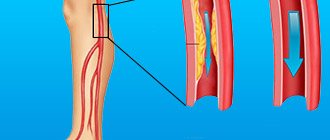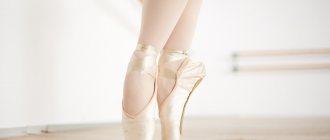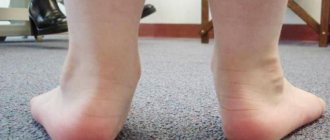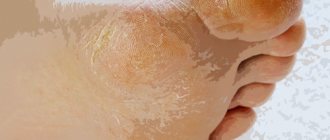Ankle arthritis is an inflammatory disease of the musculoskeletal system. As a result of the development of pathology, the patient experiences inflammation of the joint of the leg with the foot, and the mobility of the foot is limited.
Destructive damage to the ankle joint can develop at different ages. The greatest risk of its occurrence exists among men. The inflammatory process significantly reduces the quality of life of patients and requires timely and adequate treatment.
Why does it hurt
The ankle is the articulation of three bones - the fibula, tibia and talus. They are all connected to tendons. Around it there are many muscles responsible for flexing the sole. If mechanical or degenerative damage occurs in this structure, pain occurs.
Most often, the ankle joint hurts for the following reasons:
- ankle arthrosis;
- arthritis due to partial or complete dislocation;
- gout;
- tendinitis;
- tunnel syndrome;
- heel bone fracture;
- pathology of the anatomical structure of the joint.
People who lead a sedentary lifestyle are most susceptible to ankle diseases. Ligaments and muscles become flaccid, lose the ability to exercise, and therefore react to them with dislocations, sprains and fractures. Also at risk are people with increased body weight, flat feet, the elderly and athletes.
Arthrosis is not the only possible cause of pain in the ankle joint
Prognosis and prevention
A qualified physician can slow the progression of ankle arthritis and relieve pain. The doctor will give effective recommendations for preventing damage. Patients at high risk of inflammatory processes are advised to:
- Maintain normal body weight.
- Quit alcoholic beverages and smoking.
- Stick to a healthy diet.
- Maintain normal physical activity.
- Treat infectious lesions in a timely manner.
- Regularly undergo preventive examinations.
How to understand what the reason is
A doctor should carry out the diagnosis, so if you have pain or discomfort in your foot, you should not put off visiting a specialist. But already at the initial stage you can independently navigate the symptoms:
- With arthritis, the joint becomes inflamed suddenly, without provoking factors such as injury. The pain occurs mainly at night and disappears when walking.
- When the ankle bones are fractured, the bone structures of the ankle are also damaged. Swelling is visible, you experience pain at the slightest step on the foot.
- With tunnel syndrome, compression of the walls of blood vessels and nerve roots occurs (for example, this happens with diabetes, after an injury, or against the background of arthrosis). Extensive edema forms, a cooling of the limb is observed, which is replaced by a local increase in temperature.
- With tendinitis, the tendons become inflamed and swelling occurs. Pain occurs when putting weight on the leg. If left untreated, there is a risk of infection and rupture of tendon fibers.
- With gout, severe pain occurs mainly during sleep. The pain is acute, spreads to the entire foot and radiates to the big toe. Gout and salt deposition have nothing in common with arthrosis in nature, with the exception of pain.
- When the heel bone is fractured, extensive swelling, hematomas are noticeable, the foot hurts, and motor activity decreases. This problem is relevant for runners and can lead to chronic pain.
- With partial or complete dislocation, the bone tissue of the ankle thickens and the heel turns inward. The joint becomes deformed, causing extensive swelling and prolonged pain.
Unlike problems of a traumatic nature, arthrosis does not have such pronounced symptoms. With degenerative changes in the cartilage, the ankle hurts and is somewhat limited in mobility. Symptoms are often vague, so a person does not rush to consult an orthopedist, but experiments with gels, ointments, local remedies, traditional medicine and wastes precious time.
With arthrosis, there are no visible signs - swelling, hematomas
Folk remedies
A lot of traditional medicine recipes for the treatment of foot arthritis have been accumulated, but any of them can only be considered as a useful addition to the main therapy prescribed by the doctor.
- Mix approximately 100 ml of the juice of one lemon with 50 ml of hot water, moisten multi-layer gauze and apply to the joint overnight, fixing the compress with cling film and putting a woolen sock over it;
- Mix ground equal parts of radish, turnip and horseradish leaves and rub the resulting mixture on the affected area. Repeat the procedure for 7 days.
- Apply a mixture of warm sea salt with a few drops of fir essential oil to a joint heated in a warm bath, wrap the foot in gauze, film and also insulate it with a sock.
- Measure out 100 g of finely chopped cinquefoil, pour in 1 liter of vodka and leave to steep for two weeks. Take the resulting mixture one tablespoon at a time, be sure to dilute it with a small amount of water. In addition, you can apply liquid in the form of a compress to joints damaged by arthritis. After the tincture runs out, take a break of 30 days before the next course.
- Cabbage compress. Cut a washed cabbage leaf to release the juice, wrap the painful, inflamed area, and bandage it. Change the cabbage after an hour (or earlier), when the juice is absorbed and the leaf becomes dry and warm. Harmless, proven product.
The prognosis depends on the degree of neglect of the disease, as well as the correctness of the chosen course of therapy. If it was possible to start treatment in a timely manner, the prognosis is generally favorable. If the joints are severely inflamed and a serious deformity of the feet has developed, then the treatment will be very painful and may not lead to the desired effect - there is a risk of lameness, gait disturbance and even disability.
In what cases is specialist help for pain urgently needed?
You should not delay contacting a doctor under the following symptoms and circumstances:
- the ankle joint hurts and is very swollen, because of this you are unable to put on shoes;
- due to intense pain you cannot lean on your leg;
- noticed instability of the ankle, loosening (occurs with complete or partial rupture of the ligaments);
- pain occurs when you stand;
- the soreness is felt not only in the muscles, but also deep in the ankle.
Severe pain in the ankle is not a reason to try traditional medicine
Vascular diseases of the legs:
- Atherosclerosis of the blood vessels of the legs (chronic disease of the arteries, as a result of which cholesterol is deposited on the walls of blood vessels; this is the main provocateur of coronary heart disease)
- Endarteritis (a disease that affects the arteries of the lower extremities and is characterized by an imperceptible contraction of blood vessels until complete blockage, resulting in tissue necrosis that is deprived of blood supply)
- Varicose veins (the flexibility of the veins is lost, they stretch, bulge, due to disruption of the functioning of the venous valves, resulting in reverse blood flow in the veins)
- Acute obstruction of the arteries of the extremities (a disease that occurs against the background of changes in the walls of the artery, as well as other vascular diseases - embolism, thrombosis)
- Acute venous occlusion is a disease characterized by the formation of blood clots (thrombi) in the veins, mainly of the legs.
According to WHO statistics, 25% of women and 15% of men over the age of 30 suffer from foot diseases associated with wearing uncomfortable shoes. Based on this ratio, in the Russian Federation there are 12.8 million such women and 7.7 million men.
According to WHO statistics, 80% of the population suffers from various foot diseases. More than 45% of adults (in the world) suffer from flat feet alone. Based on this ratio, 96.8 million people suffer from foot diseases in the Russian Federation, of which at least 55 million suffer from flat feet.
How to deal with ankle pain
You shouldn’t fight this joint pain on your own: it’s better to get diagnosed and follow the recommendations of an orthopedist or rheumatologist. The specialist will conduct a physiological examination and collect anamnesis, and prescribe stress tests of the foot. During the examination, the condition and functioning of the nerve roots will also be assessed. If necessary, the patient will be sent for an X-ray or MRI.
The treatment regimen for osteoarthritis is fundamentally different from the treatment for gout or recovery from injury.
In case of injury, the doctor’s actions depend on the type of injury:
- in case of a fracture, a plaster cast is applied to the damaged area, but before this, surgical displacement of the bones is sometimes performed;
- the dislocation is first reduced, then an orthosis with rigid lateral parts or a plaster cast is applied to prevent swelling and properly fix the leg;
- When sprained, soft orthoses or fixing bandages are relevant.
For ankle injuries, it is important to reduce the load on the limb
Exercise therapy
Treatment of foot joint disease is impossible without performing a set of physical exercises. This point is a prerequisite in any therapeutic regimen for arthritis. For the treatment of foot joints, the complex is selected individually.
However, there are several universal exercises that can be performed by everyone without exception:
- It is performed lying on your back with your arms and legs extended. Then you need to raise your legs and try to stretch your toes as far as possible. After that, lower your legs back, and only then stop stretching them.
- Sit on a hill, such as a table. Lower your legs down and stretch your toes, trying to reach the floor with them.
- Bend and straighten your toes.
- Lie on the floor, but on your side. Move the extended leg to the side and return it back.
You need to start training during the period of remission of the disease, so as not to provoke increased inflammation. For the first time, it is best to train under medical supervision, so that the doctor makes sure that the patient is performing all the exercises correctly.
How to quickly help yourself in case of an ankle injury
If you feel severe pain in your foot due to injury or severe mechanical stress, do the following:
- place your foot on a small hill;
- remain in this position until the pain becomes less intense;
- apply a cold compress of ice wrapped in thick cloth for 20 minutes;
- eliminate the load on the leg, swaddle the injured foot tightly with a bandage (relevant during the first two days);
- As soon as possible, go to the doctor.
A cold compress of ice helps in the first hours after injury
Treatment of arthrosis of the feet
The “insidiousness” of arthrosis of the foot joints is that at the first stage few people notice it. This means that only a few turn to a specialist. And when the disease takes a more serious form, it becomes quite difficult to fight it. That is why it is important to pay attention to the slightest manifestations of this disease.
It is important to remember that arthrosis of the foot does not go away on its own. Don't expect a miracle. Over time, the problem can only get worse. If you begin to feel discomfort or experience regular pain, then this is a reason to consult a doctor.
What is prescribed for chronic pain
Therapy for arthrosis and arthritis, gout and tendonitis will be different. Almost always, at the initial stage of treatment, the patient is prescribed painkillers in the form of tablets or injections. If there is an infection and an open wound, antibiotics are required. In different cases, it is advisable to take a course of anti-inflammatory drugs and antihistamines. The patient will also be recommended a set of exercises to strengthen the feet and ankles.
Also, for chronic pain, depending on the diagnosis, the following may be prescribed:
- local remedies;
- vitamin complexes with calcium and vitamin D;
- chondroprotectors;
- drugs from the antirheumatic group;
- drugs to improve blood circulation.
Special gymnastics helps to strengthen the ankle and prevent possible injuries, for example:
For arthrosis, intra-articular injections of a synovial fluid prosthesis directly into the joint cavity are indicated. It is impossible to completely cure this chronic disease, but it is quite possible to reduce the severity of pain caused by friction of damaged cartilage. The gel enters the joint and pushes the rubbing surfaces apart, and also improves the shock-absorbing properties of the synovial fluid. This therapeutic method is considered the most progressive today.
Diagnostics
Diagnosis of arthritis in most cases does not cause difficulties - the characteristic external signs are striking, and the patient’s complaints do not raise any doubts in this regard.
It can be much more difficult to identify the cause of foot arthritis and the degree of movement disorders. The severity of inflammation can be indirectly judged by the number and changes in leukocytes in a routine general blood test. In this regard, rheumatic tests and blood tests for C-reactive protein are more informative.
The severity of movement disorders is indicated by specific functional tests. Among the instrumental methods, computer and magnetic resonance imaging are used. However, radiography of the foot in 3 projections is still effective. Diagnostics of internal organs (heart, lungs, gastrointestinal tract, kidneys) is mandatory.
Treatment of foot arthrosis
Unfortunately, even modern medicine cannot completely cure this disease. But this is not a reason to abandon therapy. Some procedures and remedies can improve the condition of the joints, as well as prevent further deterioration of well-being. With their help, you can avoid complete loss of the ability to fully move.
The following medications are used in the treatment of foot arthrosis:
- Nonsteroidal anti-inflammatory drugs.
These medications can not only relieve inflammation, but also eliminate pain. Available in tablets or capsules for oral administration, as well as in the form of ointments, gels and creams. The doctor may prescribe a course of medications that need to be combined with drugs for external use. The duration of administration and dosage must be selected by a doctor; self-medication in this and any other case is dangerous;
- Painkillers
. They are aimed at eliminating acute pain. In the final stages of the disease, they can be simply unbearable. In this case, the doctor prescribes injections with corticosteroids. It is recommended to do them no more than once a week, and the course is repeated a maximum of twice a year;
- Chondroprotectors.
These are medications that show the best results in the treatment of joint diseases. They allow you to restore cartilage tissue and also prevent its destruction in the future;
- Hyaluronic acid.
Preparations based on it are injected into the joint. It increases the amount of lubrication around cartilage, improves tissue elasticity and reduces friction in joints;
- Anti-arthrosis ointments and gels.
They allow you to accelerate blood circulation at the site of the lesion, which leads to improved nutrition of the joint.
One of the most popular and effective drugs for the treatment of arthrosis of the foot is Artracam. This is a new generation product that belongs to the group of chondroprotectors. It allows you to establish metabolism in the joint.
The main active ingredient in the drug is chondroitin sulfate, which is part of cartilage tissue. Artracam not only has chondroprotective properties, but also inhibits enzymes that destroy joints. The level of proteoglycans increases, metabolism and phosphorus-calcium metabolism improves. Cartilage tissue begins to actively regenerate.
In addition, Artracam relieves pain due to arthrosis of the toe, as it has an analgesic and anti-inflammatory effect. The production of joint fluid accelerates and increases. Therefore, the joints become more mobile, friction between the cartilages disappears, and the intensity of pain decreases.
In addition to medications, non-drug methods can help cope with arthrosis of the foot joints. They are no less effective, but their effectiveness and purpose depend on the stage of the disease. These include:
- Applying a “boot” made of plaster. Such therapy will be effective in the last stages of the disease, when the pathology has already gone too far. Plastering allows you to completely immobilize the limb;
- Wearing special shoes with orthopedic insoles and arch supports. In the early stages, this allows you to improve blood flow and increase metabolism;
- Massage. For arthrosis of the foot, it is useful to do it in courses, but only during those periods when the disease is not in acute form. Then you need to first relieve inflammation, and only then start massages. They will be effective at any stage of arthrosis;
- Laser magnetic therapy, UHF and phonophoresis. They are used in combination with drug treatment to enhance the effect of the drugs;
- Mud. They will work perfectly in combination with other techniques at any stage. They help to “deliver” all the necessary nutrients to the joint for its restoration, and also relieves stiffness in movements;
- Operation. Surgical intervention is a radical solution to the problem. It is relevant when other means no longer work. The operation is performed in the last stages of the disease. The surgeon can fuse parts of the joints or replace them. In the first case, the foot will remain completely motionless, which can significantly reduce the patient’s quality of life. Joint replacement, on the contrary, allows you to maintain her mobility. But the shape of the foot may change.
Physical therapy works well in the treatment of arthrosis of the foot. It will be useful at any stage of joint damage. Gymnastics can not only alleviate the course of the disease, but will also be an excellent preventive measure. Therefore, exercise therapy is almost always prescribed to patients who have been given a similar diagnosis.








